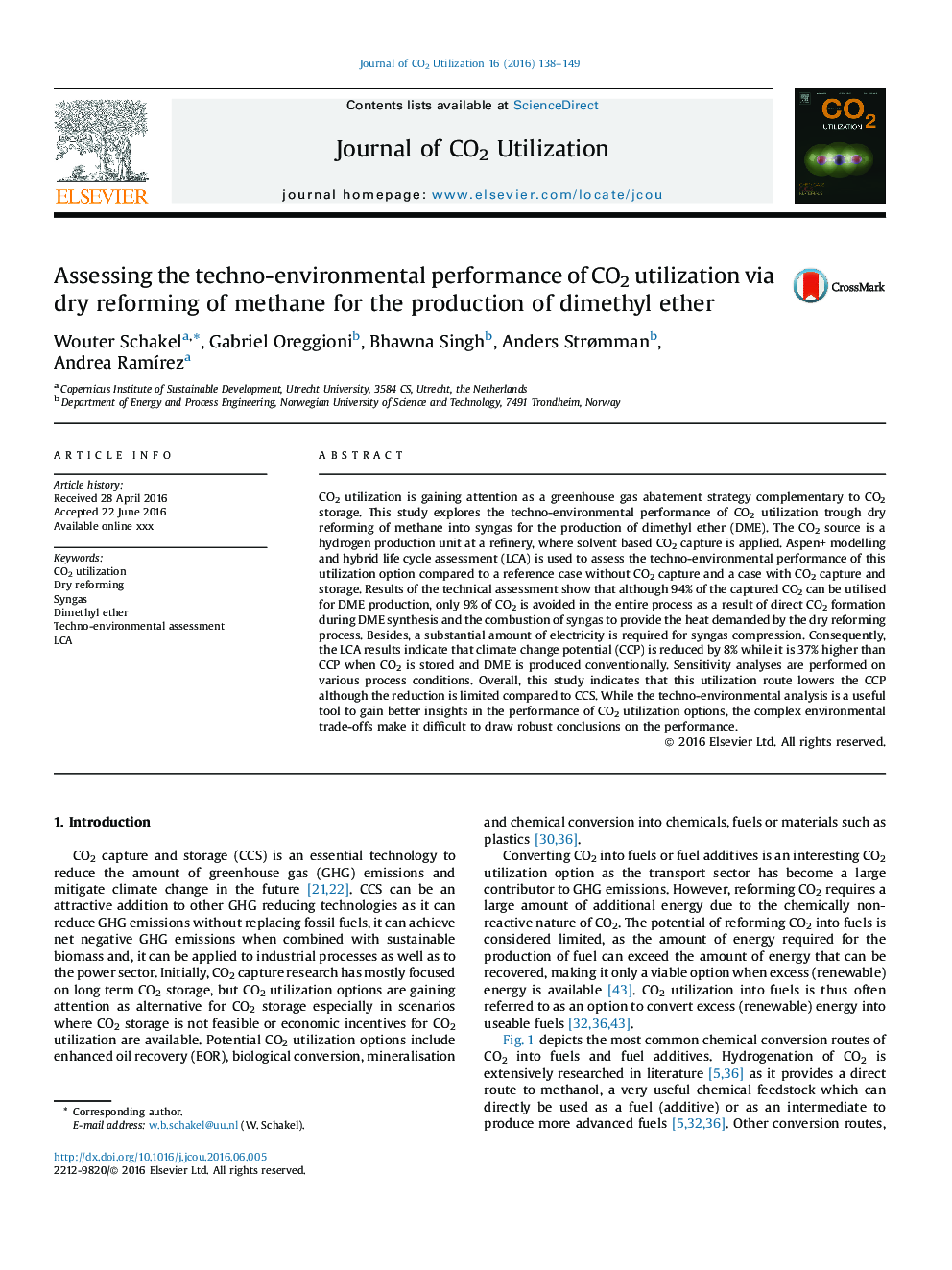| کد مقاله | کد نشریه | سال انتشار | مقاله انگلیسی | نسخه تمام متن |
|---|---|---|---|---|
| 63527 | 48222 | 2016 | 12 صفحه PDF | دانلود رایگان |
• Utilizing CO2 into dimethyl ether improves techno-environmental performance.
• Climate change potential reduction is limited compared to CO2 capture and storage.
• Environmental trade-offs of CCU more complex than those of CO2 capture and storage.
• Techno-environmental analysis improves insights in performance of CO2 utilization options.
CO2 utilization is gaining attention as a greenhouse gas abatement strategy complementary to CO2 storage. This study explores the techno-environmental performance of CO2 utilization trough dry reforming of methane into syngas for the production of dimethyl ether (DME). The CO2 source is a hydrogen production unit at a refinery, where solvent based CO2 capture is applied. Aspen+ modelling and hybrid life cycle assessment (LCA) is used to assess the techno-environmental performance of this utilization option compared to a reference case without CO2 capture and a case with CO2 capture and storage. Results of the technical assessment show that although 94% of the captured CO2 can be utilised for DME production, only 9% of CO2 is avoided in the entire process as a result of direct CO2 formation during DME synthesis and the combustion of syngas to provide the heat demanded by the dry reforming process. Besides, a substantial amount of electricity is required for syngas compression. Consequently, the LCA results indicate that climate change potential (CCP) is reduced by 8% while it is 37% higher than CCP when CO2 is stored and DME is produced conventionally. Sensitivity analyses are performed on various process conditions. Overall, this study indicates that this utilization route lowers the CCP although the reduction is limited compared to CCS. While the techno-environmental analysis is a useful tool to gain better insights in the performance of CO2 utilization options, the complex environmental trade-offs make it difficult to draw robust conclusions on the performance.
Journal: Journal of CO2 Utilization - Volume 16, December 2016, Pages 138–149
